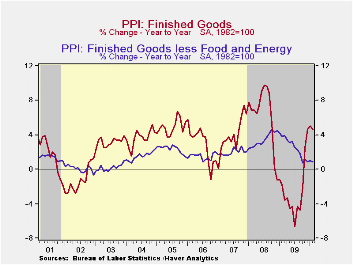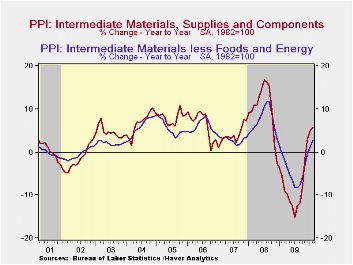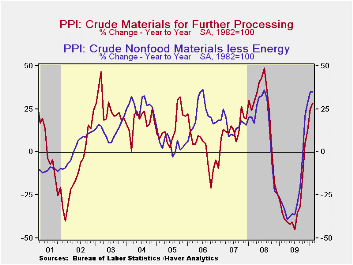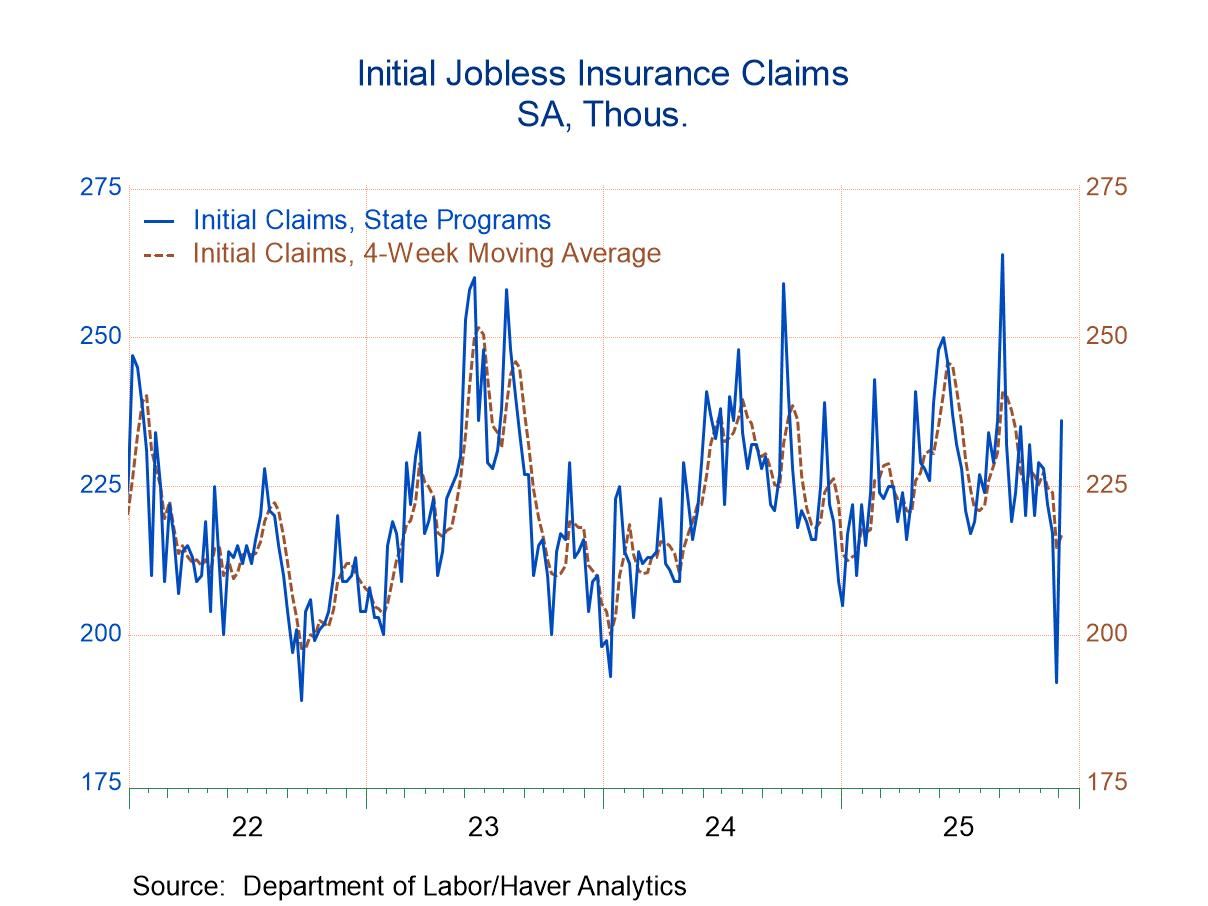 Global| Mar 17 2010
Global| Mar 17 2010U.S. PPI Falls With Weak Energy & Core Prices
by:Tom Moeller
|in:Economy in Brief
Summary
Producer price inflation eased last month. The finished goods PPI fell 0.6% after its strong 1.4% increase during January. Nevertheless, the 4.6% y/y gain remained nearly the strongest since the autumn of 2008. The February decline [...]

Producer price inflation eased last month. The finished goods PPI fell 0.6% after its strong 1.4% increase during January. Nevertheless, the 4.6% y/y gain remained nearly the strongest since the autumn of 2008. The February decline exceeded Consensus expectations for a 0.2% dip.
Lower energy prices were behind the decline in the PPI. Their 2.9% drop reversed some of the 5.1% January increase but left energy prices 17.7% higher than last year. A 7.4% decline (+48.7% y/y) in gasoline prices led the weakness and reversed most of the 11.5% January gain. Home heating oil prices also fell sharply. However, their 5.6% decline (+29.3% y/y) still left the annual gain at its strongest since the fall of 2008. Finally, natural gas prices rose a modest 0.8% (-8.0% y/y) and electricity prices rose 0.4% (-1.0% y/y).
Finished food prices repeated their 0.4% January increase. Their resulting 3.4% y/y increase was the strongest since December 2008. Severe weather caused a one-third y/y increase in prices for fresh fruits while egg prices (16.5% y/y) and pork prices (14.1% y/y) have been similarly firm. These strong gains have been offset by weak beef prices and declines in bakery, rice and pasta product prices.
Finished producer prices excluding food & energy edged up an expected 0.1%. The resulting 0.9% y/y increase was nearly the weakest since early-2004. The PPI for finished consumer goods less food & energy rose just 0.2% (1.7% y/y) following a 0.4% January gain. Finished durables prices edged up 0.1% (0.6% y/y) while core finished consumer nondurable goods prices gained 0.2% (2.4% y/y), their weakest since October. Capital equipment prices slipped 0.1% (+0.1% y/y) reflecting weakness amongst most products.
Prices for intermediate goods rose just 0.1% reflecting a 2.7% decline (+19.6% y/y) in energy and a 0.4% decline (+2.3% y/y) in food. The increase in core prices, however, moved higher to 0.9% and the 2.8% y/y increase was the strongest since December 2008. The crude materials PPI fell 3.5% due to a 6.4% decline (+49.8% y/y) in energy prices. Core crude prices were led modestly lower due to a 7.4% decline (+59.7% y/y) in aluminum prices. Versus last year copper prices also have been strong and doubled while iron & steel scrap prices have risen by two-thirds.
The producer price data is available in Haver's USECON database. More detailed data is in the PPI and in the PPIR databases.


| Producer Price Index(%) | February | January | December | Y/Y | 2009 | 2008 | 2007 |
|---|---|---|---|---|---|---|---|
| Finished Goods | -0.6 | 1.4 | 0.4 | 4.6 | -2.5 | 6.4 | 3.9 |
| Less Food & Energy | 0.1 | 0.3 | 0.0 | 0.9 | 2.6 | 3.4 | 2.0 |
| Intermediate Goods | 0.1 | 1.7 | 0.6 | 5.8 | -8.4 | 10.3 | 4.0 |
| Less Food & Energy | 0.9 | 0.5 | 0.5 | 2.8 | -4.2 | 7.4 | 2.8 |
| Crude Goods | -3.5 | 9.6 | 0.8 | 28.6 | -30.4 | 21.4 | 11.9 |
| Less Food & Energy | -0.6 | 6.6 | 4.5 | 34.9 | -23.5 | 14.8 | 15.6 |
Tom Moeller
AuthorMore in Author Profile »Prior to joining Haver Analytics in 2000, Mr. Moeller worked as the Economist at Chancellor Capital Management from 1985 to 1999. There, he developed comprehensive economic forecasts and interpreted economic data for equity and fixed income portfolio managers. Also at Chancellor, Mr. Moeller worked as an equity analyst and was responsible for researching and rating companies in the economically sensitive automobile and housing industries for investment in Chancellor’s equity portfolio. Prior to joining Chancellor, Mr. Moeller was an Economist at Citibank from 1979 to 1984. He also analyzed pricing behavior in the metals industry for the Council on Wage and Price Stability in Washington, D.C. In 1999, Mr. Moeller received the award for most accurate forecast from the Forecasters' Club of New York. From 1990 to 1992 he was President of the New York Association for Business Economists. Mr. Moeller earned an M.B.A. in Finance from Fordham University, where he graduated in 1987. He holds a Bachelor of Arts in Economics from George Washington University.






